LabVIEW AF_9 Abstract Message in LabVIEW Actor Framework
First rule of coding - Just write the code.
Tom McQuillan Youtue Channel, LabVIEW Sample Code
Sending Messages to the Calling Actor User Interfaces by Using Abstract Messages
Notes:
The “Interface Message” is introduced into LabVIEW 2020. With multiple inheritance, we no longer need to create an Abstract Message. This post is simply to keep the whole learning progress complete and help to understand the Actor framework more completely.
Both Interface Message and Abstract Message approaches will be used. This article contains three methods of sending message from Nest Actor to Calling Actor will be introduced.
- Caller Enqueuer (Not recommanded)
- Abstract Message
- Interface
Caller Enqueuer (Not recommanded)
Sometimes we need to send message from Nested Actor to Calling Actor. And we DO NOT hope nested actor dependent on its calling actor. As before we alway hope to get Low coupling often correlates with high cohesion
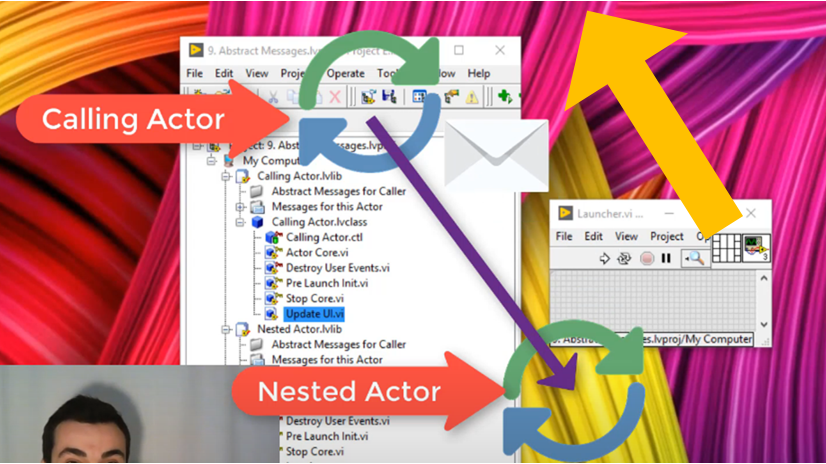
For a simple sample code, the message direction as showing above.

The most straight forward idea is to create an Update UI method in Calling Actor -> Create Message -> Send Message in Nested Actor
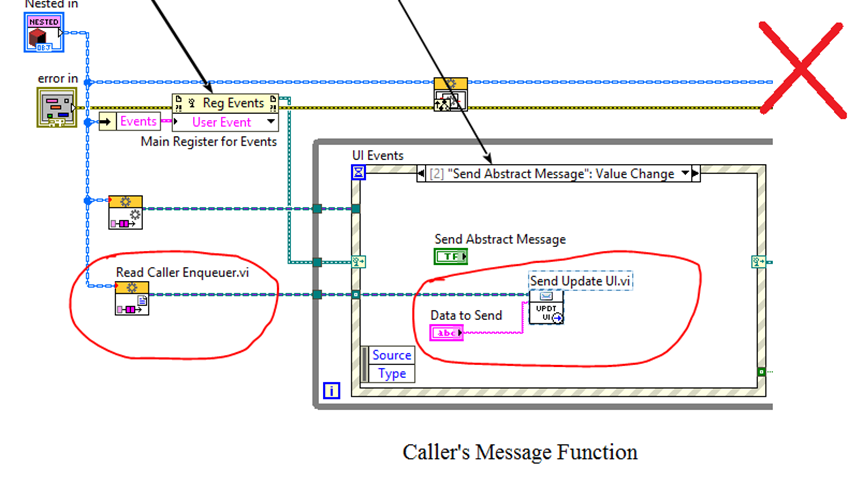
As we directly use Calling Actor Lvlib function “Send Update UI”, we created a dependency between Nested Actor over Calling Actor. This will stop the Nested Actor from being reused in other applications without the calling actor being present.
For example, when we copy the Nested Actor in a new Project, then Calling Actor.lvlib showed in the dependencies.
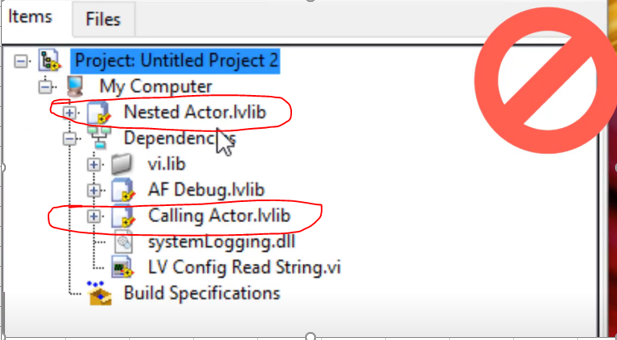
So the Nested Actor is dependent on its Calling Actor, which we do not want. It is unable to reuse the Nest Actor due to coupling.
“Send Update UI.vi” message tie two actors together.
Abstract Message
“Abstract Message” is a method for Nested Actor and Calling Actor communication without dependency. (Before LabVIEW 2020)
In this case, Nested Actor only in charge of sending message and does not care who receive the message and how the receiver (the Calling Actor) perform upon the information. And Nested actor is not going to find out. Calling Actor only in charge of receiving and action, does not care who send the message.
To sum up, there are two parts in Abstract Message.
- The Nested Actor sending the message
- The Calling Actor receive the message
No dependency between Calling actor and Nested Actor, but there will be dependency between Nested Actor and Abstract Message.
- Create Abstract Message in Nested Actor (what message to send)
- Create Child Abstract Message in Calling Actor (what to do after message)
- In Nested Actor, write the “Child Abstract Message” to Nested Actor calling method when button is clicked. (how to send the message)
- Create a message for item 3 method (how to send the message)
- Send item 4 message in the event loop (how to send the message)
Create Abstract Message _Nested Actor
In Nested Actor Library, Create Abstract Message for caller. Right Click Nested Actor.lvclass -> Actor Framework -> Create Abstract Message for Caller
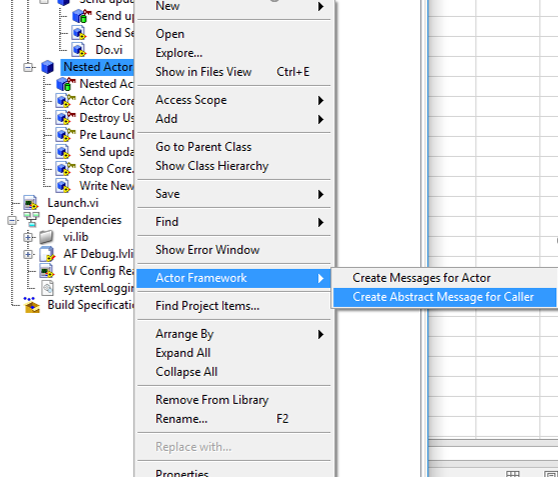
Enter a name for the New Message

Then define the attributes to the new message, in this case, only a string control is needed (it could be replaced by Cluster for the future project). Then click “Create Message”.
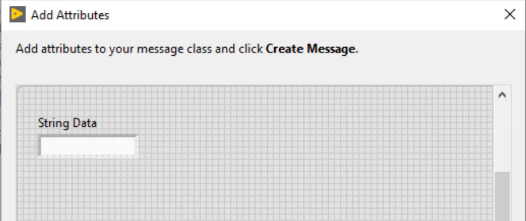
The Abstract Message “New Data Msg.lvcalss” for Calling Actor is automatically created

It is worthy mentioning that New Data Msg.lvclass is the direct child of LabVIEW Message.lvclass, although owned by Nested Actor.lvlib, it is a dependent class NOT owned by Nester Actor.class

As mentioned before, Nestted Actor only care about sending message, so there is only “Send New Data.vi”, NO “Do.vi” in this lvclass. So the nested actor created an “Abstracted Layer”.
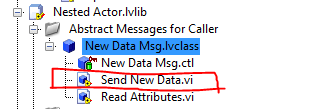
Create Abstract Message _Calling Actor
Nested Actor has created the sending message function and have no idea how the message will be handled, now it’s Calling Actor turn to create a method that we want to execute when we receive a message from Nested Actor. In our case, we want to Update UI.vi to execute when a message saying a data is available.
Right click Update UI.vi-> Actor Framework -> Create Child of Abstract Message

Select the parent class -> the message class (New Data Msg.lvclass), we created from Nested Class. Then we have creatd the “Update UI Msg.lvclass” which is the child of “New Data Msg.lvclass”
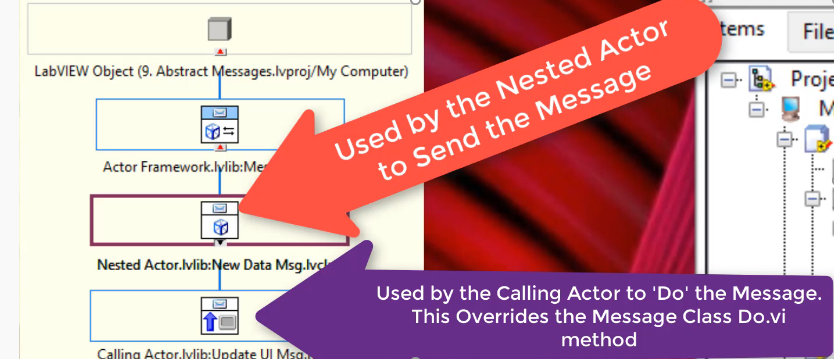
As we mentioned before, Calling Actor only care about the method/action of the message, it does not care about the message source. So in this “Update UI Msg.lvclass”, we only have the “Do.vi” , no message sending function.
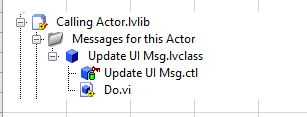
This “Update UI Msg.lvclass” (belong Calling Actor) should be send (in another way enqueued by Nested Actor)
Create Message Implementation (Before Sending)
Since the Nested Actor has no idea how the message is processed. Before the nested actor is launched, we need to write the message implementation that Calling Actor is going to execute when it receives this abstract message.
LabVIEW has scripting a vi “Write New Data Msg.vi” when we create the abstract message for caller
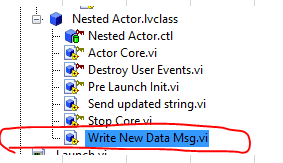
In Calling Actor before Nested Actor is launched, use “Write New Data Msg” to pass “Update UI Msg.lvclass”

This is to override the “Message.lvclass:Do.vi”, and execut the “Calling Actor.lvlib:Update UI Msg.lvcalss”

More details of the code interval
- Bundle message implementation into Nested Actor Data
- The Message implementation is from Calling Actor
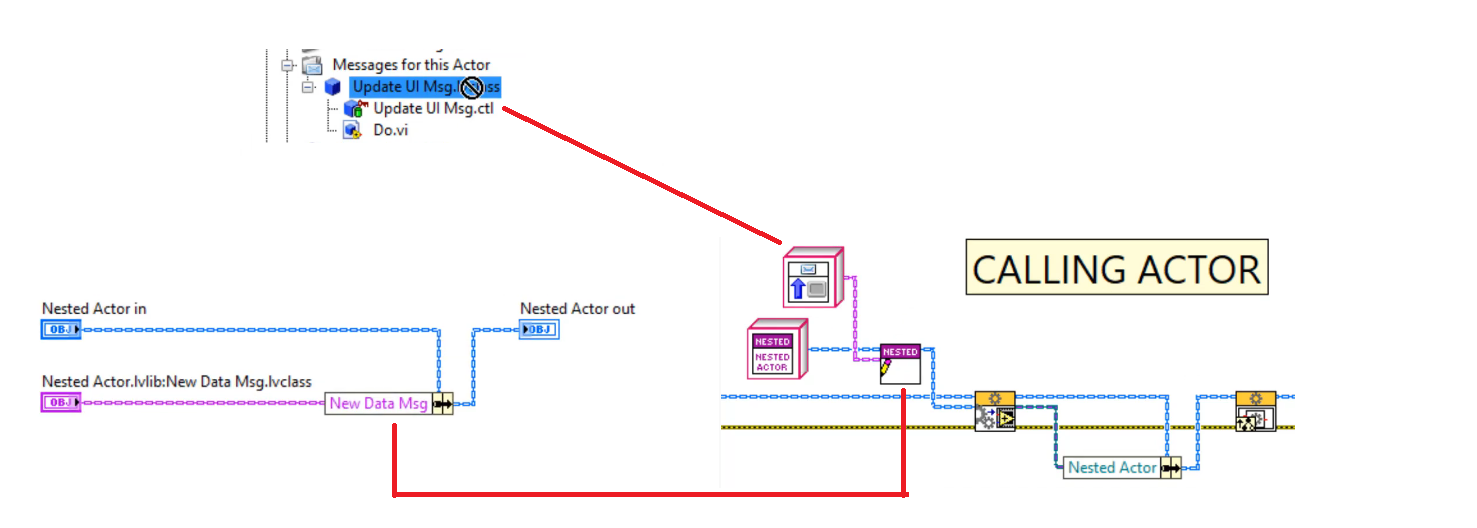
Now we finish how the message will be handled, then we work on how to send the message
Send Message Implementation
After complete how the message is handled, we then work on how to send the message from Nested Actor.
Create a method within Nested Actor.class named “Send updated String.vi” to send the data via abstract message to Calling Actor. It needs calling actor enqueuer and message implementation (or messge to use New Data Msg.lvcall) that
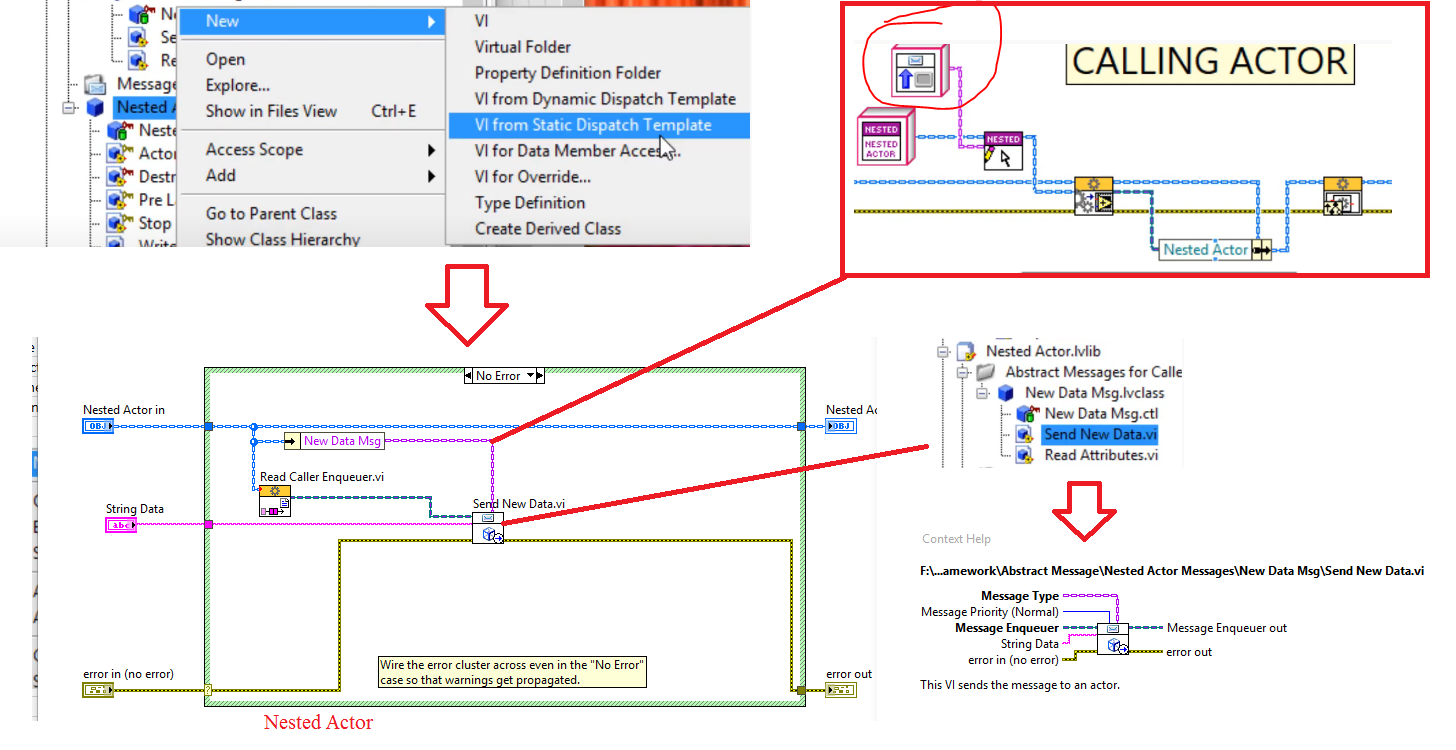
Things are a bit confusing here, we get clear again.
- The Nested Actor has a method called Write New Data Msg.vi (the same name as Abstract Message)
- Write New Data Msg.vi has a input New Data Msg (which is also Nested Actor Data element)
- In Calling Actor we have a method Update UI and a message Update UI Msg.lvclass
- In Calling Actor we send/connect Update UI Msg.lvclass to New Data Msg connector of Write New Data Msg.vi
At this moment, we finish the method for send Message Implementation. Then we need to create a message for this method. (It is tricky part for me at all time, every method needs a message. And we need to create a message for message methods/operations)
Right click Send Update String.vi -> Actor Framework -> Create Message
Then go find the message for this Actor and place “Send Send Updated String.vi” in the event structure of Nested Actor Core.
We do not need the “Read Caller Enqueuer.vi” anymore, it is handled within the method of “Send updated String.vi”
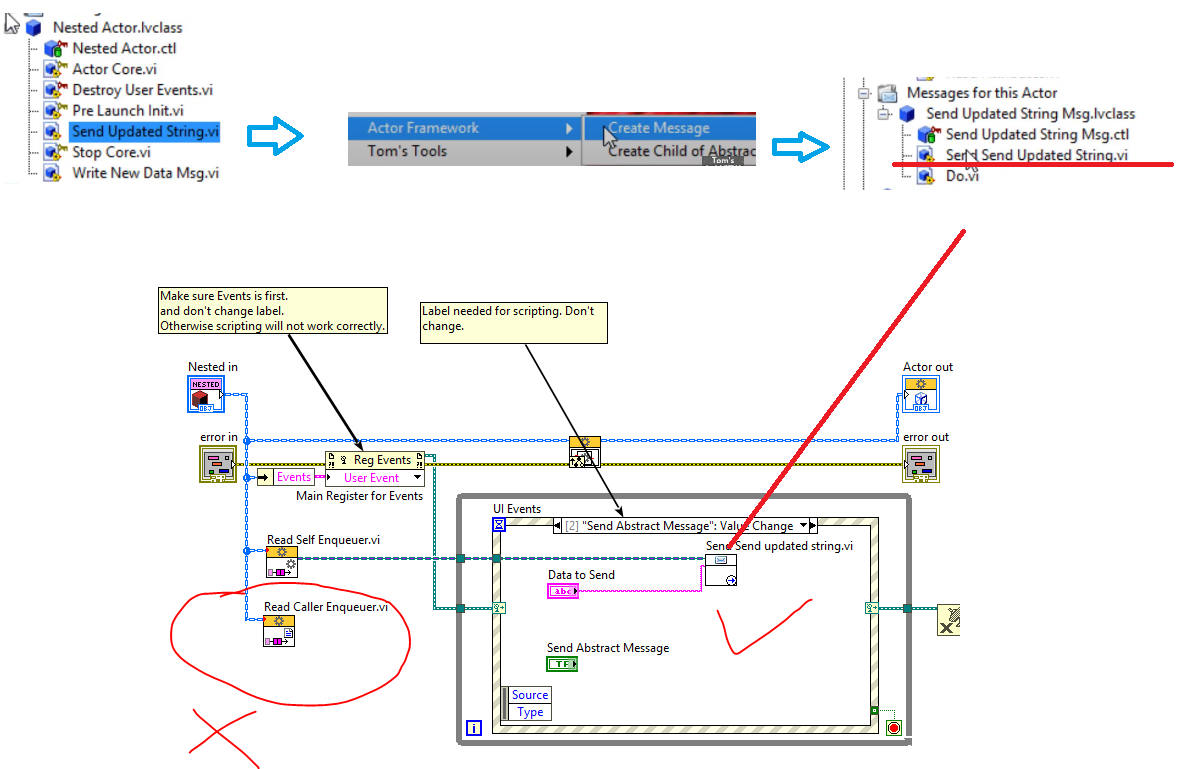
Finial Test
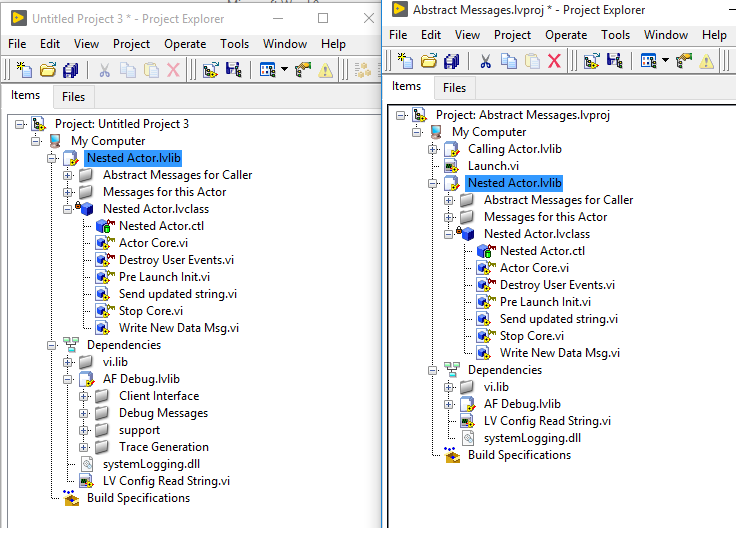
Although we still use the function “Read Caller Enqueuer”, but the Abstract Message worked as medium that seperated the Calling Actor and Nested Actor.
It is not straight forward for me even after many days of thinking, thankfully the new function “Interface” make the things a bit easier
Interface Method
Interface can be considered as a class without attributes and with all methods being abstract. Interface is a definition class:
- No code
- No data structure
- Only empty methods to override
- Own data type
Create UI
It is only available at LabVIEW 2020, the code is written as LabVIEW 2020 SP1. This is based on the UI Template, which is the VI package we used in Chapter 8.
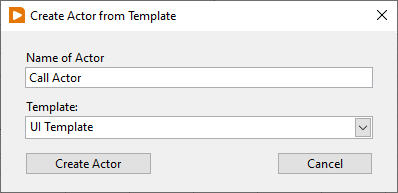
Only create the Event Support for the Calling Actor string indicator (Data Received)

Create Interface
It is recommended to add an Interface Library first for file organization.
Create Interface as creating class in Project and named the interface as “Send String”.
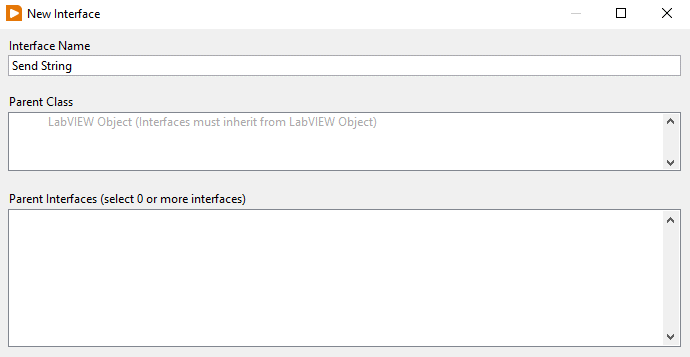
Then Create a “Data Received” method within Interface, since it is a abstract method, we need to use “VI” from Dynamic Dispatch Template

Set Calling Actor to Inheritance Interface
As mentioned, Interface only define a abstract method, so we need Calling to inherit the Interface.
Change Calling Actor Parent Interface to “Send String”

Then Error will occur and we need to develop functions to override
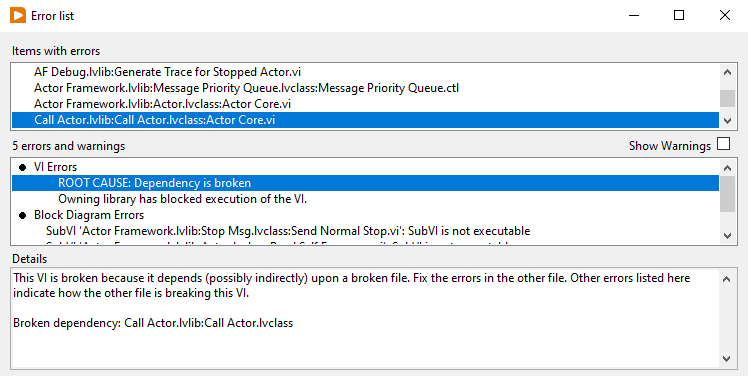
In Calling Actor.lvclass, right click New -> VI for Override ->
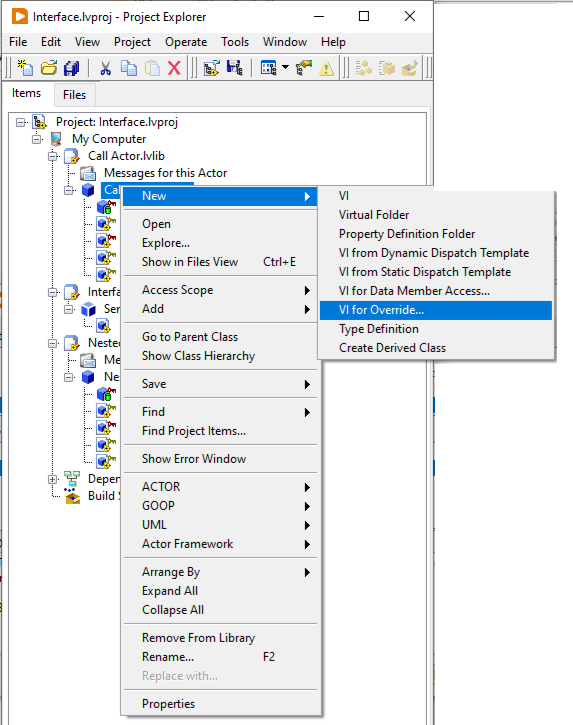
The function/method with “*” in front needs to be override
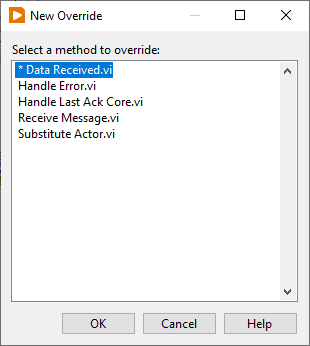
As we already create the event to update Calling Actor front panel, we could generate the event and pass the “Updated Data” to the event

The method implementation is finished. Then we need a message to execute this method from Interface.lvlib
Create Message for Nested Actor
Create the message for Data Received.vi within Interface.lvlib
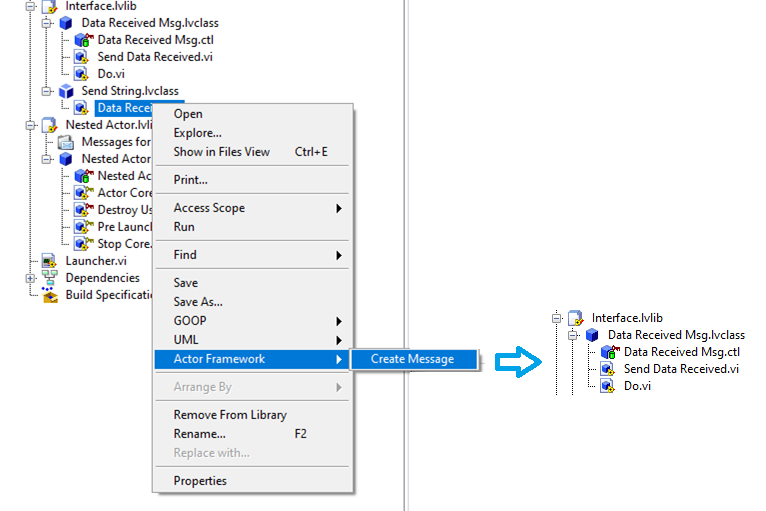
It is the Nested Actor’s task to send the “Data Update” message. With the help of Read Caller Enqueuer, we could simply put the interface within Nested Actor Event case.
But for normalization and future coding, it is better to
- Create a Nested Actor own method to perform “sending message”
- Create a message for above method
- Send above message within Nested Actor
So we create a Nested Actor method named as “Data Update.vi”, within this method we read caller enqueuer and use “Send Data Receive” from Interface library

Then Create Msg for Data Update method within Nested Actor and put it into Nested Actor event structure.
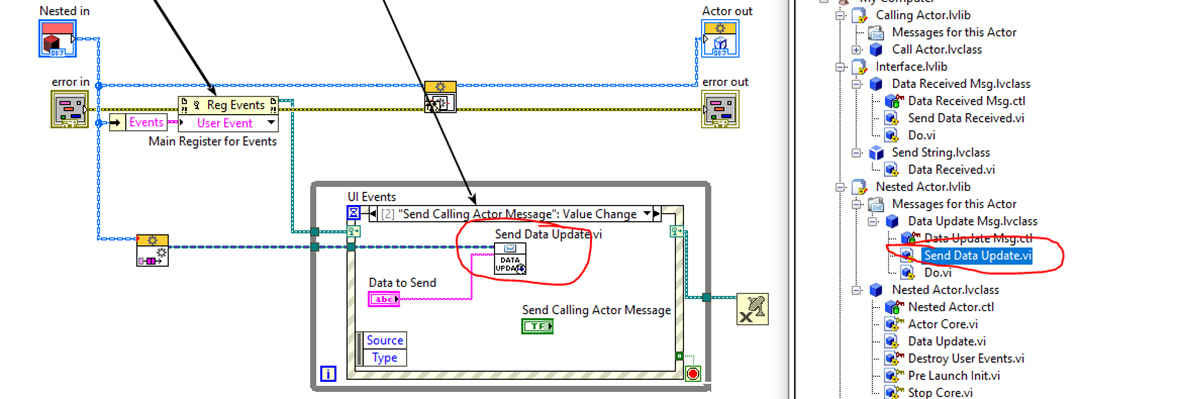
Quick summary of work/data flow,
- After user click Send Calling Actor Message button
- Nested Actor enqueue send Data Update message
- Data Update message call its “Do.vi” which will use “Nested Actor.lvlib:Data Update.vi”
- Then “Nested Actor.lvlib:Data Update.vi” will call “Interface.lib:Data Received Msg.lvcalss: Send Data Received” (A message is sent)
- “Interface.lib:Data Received Msg.lvcalss: Send Data Received” this message will call “Interface.lib:Send String.lvclass: Data Receive.vi” (an Abstract method)
- The “Interface.lib:Send String.lvclass: Data Receive.vi” Abstract method is override by Calling Actor, which will generate an user event, then the event will update Call Actor UI

Result
The result is shown as below, we are capble to send the message between Nested Actor and Calling Actor. And there is no dependency between Calling Actor and Nested Actor.
The Interface.lviib become the dependency just as the Abstract Message.
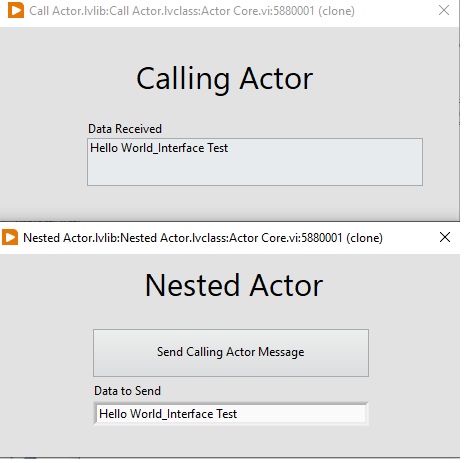
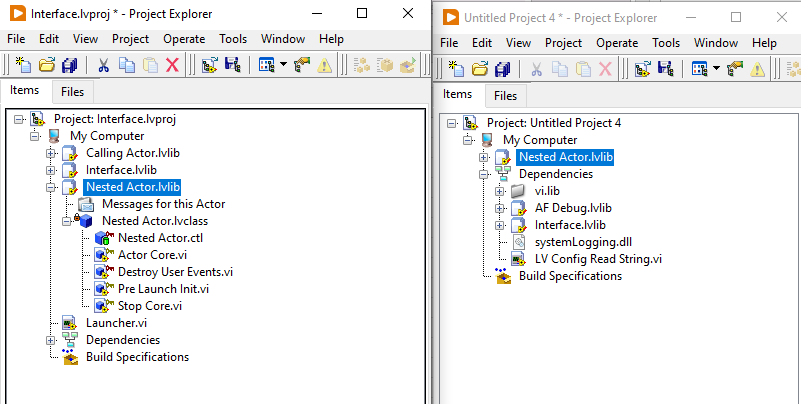
It takes a lot of step to ensure that Actors are independent between different Actors.


Comments